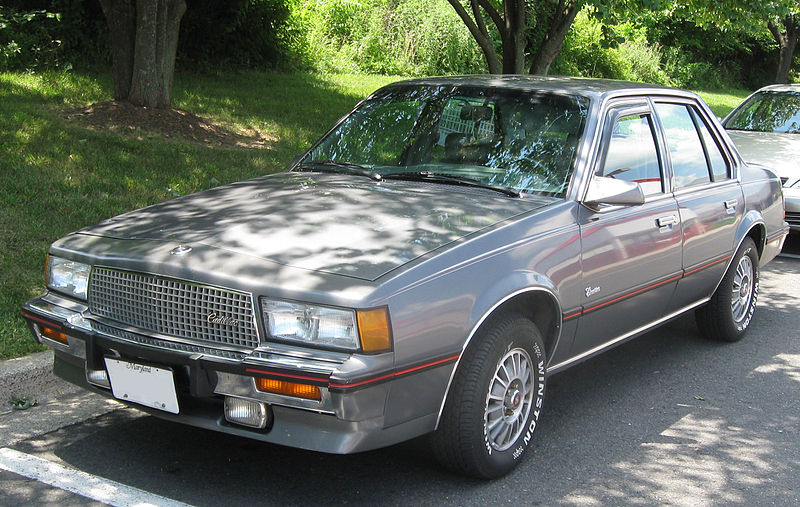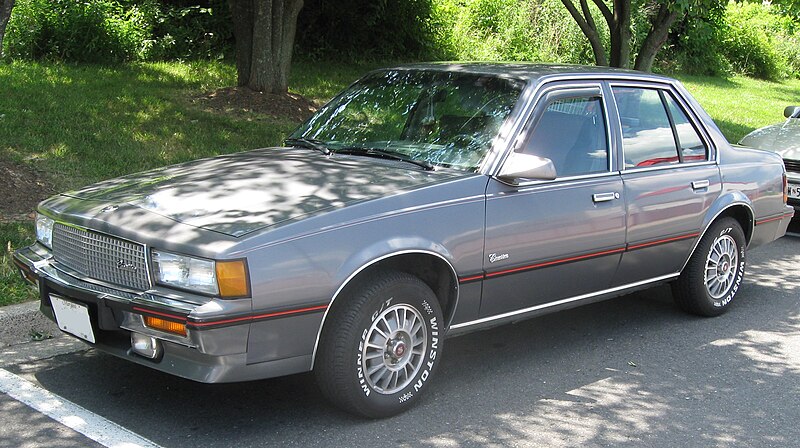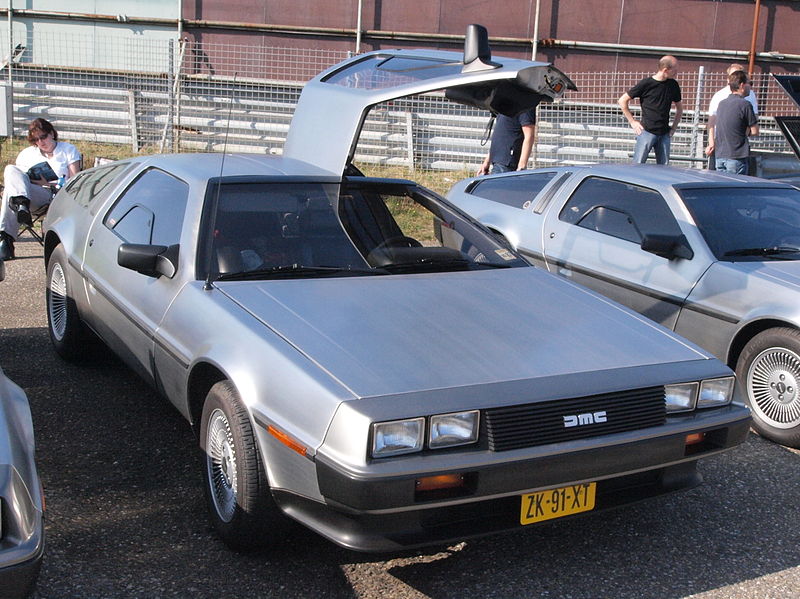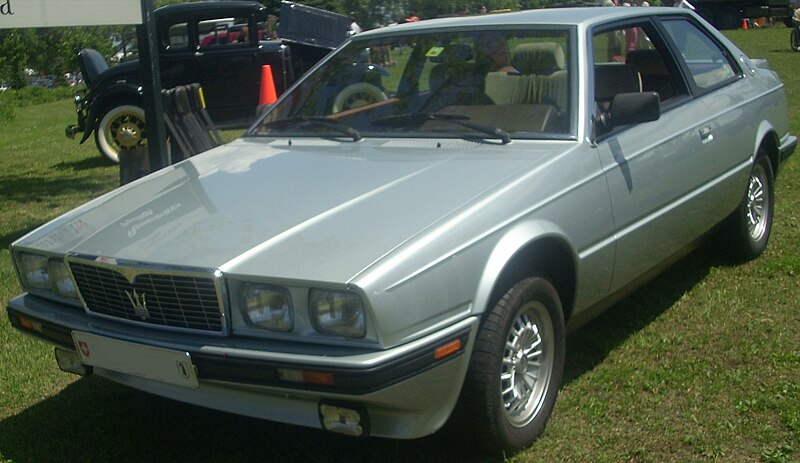The 1980s weren’t the golden age for cars, to say the least. From underwhelming engines to practically non-existent safety features, many cars from this era can be described as a handful of automotive disappointments.
During this decade, car manufacturers are still reeling from the ’70s oil crisis and the “malaise” period. Things took a turn for the worse as global competition rose, and the decline of Detroit hit American car manufacturers hard. International car makers weren’t spared either, producing some notably subpar vehicles. There are infamous cars for their poor quality, but some others are even more notorious for being downright disasters.
Let’s dive into the worst cars made in the 1980s.
Yugo GV (1985-1991)
Often cited as one of the worst cars ever in history, the 1985 Yugo GV promised affordability but became synonymous with poor quality and unreliability. Soon after its release, this car quickly revealed itself to be a major disappointment due to its poor performance. Things got so bad that dealers even gave it away for free if they purchased a car! Its notoriety faded over time, and today, it’s largely forgotten except by car enthusiasts.
Manufactured by Zastava, a Yugoslavian company, the Yugo GV (“Great Value!”) initially attracted buyers with its $3,990 price tag. However, owners soon realized its numerous shortcomings. The Yugo was even dubbed the Yugo “the Mona Lisa of bad cars,” highlighting its lack of power, poor engineering, and flimsy construction.
In a twisted sense, its unreliability was its safest feature, often being too broken to even leave the driveway. There was even a convertible version, sometimes mistaken for a Yugo, that accidentally left the factory without a roof. It was a stark reminder that cutting costs should never come at the expense of basic quality and safety.
Despite its many flaws, the Yugo managed to survive for seven years and sell 141,000 units, even after its American subsidiary went bankrupt and an updated model was introduced shortly before the GV was discontinued in 1991.
Cadillac Cimarron (1982-1988)
There are bad ideas, bad execution, and there’s the Cadillac Cimarron. It was the result of a hasty decision to transform a Chevy Cavalier into a luxury vehicle, giving designers only a few weeks to complete the task.
With no time to develop a better engine, the car ended up with the underpowered Cavalier engine, and suspension adjustments were hastily made in less than a week. The outcome was a car with a weak base engine producing just 90 horsepower, paired with a lackluster transmission, small thirteen-inch wheels, and oversized hubcaps. Automotive magazines tried to put a positive spin on it, but the truth was clear: a Cadillac should be luxurious and grand, not an underperforming economy car disguised with plush seats.
Labeling this economy car as a luxury vehicle was a clear case of misleading advertising. It stands as one of the most infamous examples of rebadging gone wrong in the automotive world and a major blunder for Cadillac.
Astonishingly, this model stayed in production until 1988, making it one of the worst cars of the 1980s. The Cimarron didn’t completely ruin Cadillac’s reputation by itself, but it certainly contributed significantly to its decline.
Chrysler TC (1989-1991)
The Chrysler TC, a result of the ill-fated partnership between Maserati and Chrysler, is a notable entry on this list. This collaboration was a classic example of misalignment between two companies.
Conceived as part of Lee Iacocca’s vision to bring an Italian-built roadster to Chrysler dealerships, the TC’s “Maserati” engine was mostly made of Chrysler parts. The goal was to sell 10,000 units a year, but the plan backfired. The TC was too similar to Chrysler’s own 1987 LeBaron, confusing consumers and making them question why they should pay $35,000 for the TC when the LeBaron was much cheaper.
The car’s exterior design was a confusing mix, unable to decide whether it was trying to be a Thunderbird or an Italian coupe, and it didn’t fare well in terms of looks. Performance-wise, the TC didn’t impress either. Equipped with a base 2.2-liter turbocharged four-cylinder engine delivering only 160 horsepower, the car struggled with handling and was plagued by frequent breakdowns.
Steering and transmission issues were rampant, leading to its discontinuation and obscurity among newer drivers. Further complicating matters, the TC’s launch was delayed by two years, finally arriving in 1989.
Struggling with sales and bound by a contract to take 7,300 units, Chrysler didn’t manage to clear the last of these vehicles until 1991. This costly mistake effectively ended any future partnership between Maserati and Chrysler.
Hyundai Excel (1985-1999)
Today’s high-quality Hyundais make it hard to remember their humble and less impressive beginnings. The first Hyundai to land on American soil was the Excel, a rebranded Mitsubishi sold for $4,995 – undercutting Chevrolet’s Chevette by $650. Despite the cautionary tale of the Yugo GV, the budget-friendly Excel attracted cost-conscious buyers.
However, this car was far from a good deal. Cramped, noisy, unreliable, and sluggish, the Excel was an exercise in frustration, featuring a plastic, unrefined interior and unimpressive handling. It was so slow it could barely compete with a child’s tricycle, and the build quality was so poor that parts often came off in the driver’s hand.
The Excel was essentially a disposable car, quickly finding its way to junkyards. Despite its shortcomings, this entry into the American market gave Hyundai a foothold, which, after about 25 years and significant investments in quality improvement, led to the excellent vehicles they produce today.
Pontiac Fiero (1983-1988)
The Pontiac Fiero promised to be an affordable American mid-engine sports car. It initially garnered praise for its mid-engine layout and fuel efficiency. However, it quickly faced criticism due to its lack of power and awkward handling of suspension problems. Early models were criticized for their handling and were even prone to engine fires. Although it improved over its production run, the damage was done.
The Fiero became a cautionary tale about the need for thorough testing and gradual development, rather than rushing to market. These issues severely tarnished Fiero’s reputation, leading to its discontinuation in 1988.
AMC Eagle (1980-1988)
The AMC Eagle was one of the first crossover vehicles, combining a car-like body with four-wheel drive. Despite receiving a fair share of attention during its time on the market, didn’t enjoy the kind of publicity any carmaker would want.
This car suffered from an identity crisis and mediocre execution. It was too car-like for SUV enthusiasts and too rugged for regular car buyers. Moreover, reliability issues didn’t help its case. The Eagle was a forward-thinking concept, but its execution left much to be desired, reminding us that innovation must be matched with quality.
With AMC now defunct and the Eagle’s production run being brief, this model has slipped into obscurity, especially among younger drivers today—and perhaps that’s for the best.
DeLorean DMC-12 (1981-1983)
The DeLorean DMC-12, famous for its gull-wing doors and stainless steel body, became an icon, particularly after its role in “Back to the Future.” But away from the silver screen, it was troubled by performance issues, lackluster driving dynamics, and quality control problems.
Before appearing in the famous sci-fi classic, the DeLorean DMC-12 had already caught the eye of car enthusiasts with its unique design. However, the excitement quickly faded for those who purchased it, as the car’s performance was underwhelming. Its 3.9-liter V-6 engine managed only 130 hp, far from the power needed for any real thrill. The build quality could have been better. The British government had invested heavily in the project, insisting on a factory in Northern Ireland without considering the region’s lack of automotive manufacturing experience.
Early buyers soon realized the car’s deficiencies. As its shortcomings became widely known, John Z. DeLorean faced the dilemma of unsellable stock. In 1982, with no further financial support from the U.K. government, DeLorean infamously got involved in a cocaine-trafficking scheme, leading to his arrest and subsequent acquittal. The DeLorean Motor Company ceased operations the same year, and the last models were sent to the U.S. as 1983 versions.
The DeLorean story is a blend of ambition, innovation, and mismanagement, showing that a car needs more than just a bold design to succeed.
Cadillac DeVille (1985-1993)
In 1982, Cadillac made a significant change by replacing its hefty 6.0-liter V-8 with a much smaller 4.1-liter V-8. This new engine struggled to power the large vehicles it was fitted in. So, Cadillac’s solution was to downsize the cars themselves.
The 1985 front-wheel-drive DeVilles were a drastic change—two feet shorter and 600 lbs lighter than their rear-wheel predecessors, making them a better match for the smaller V-8. However, that’s about as far as the praise goes.
The smaller DeVille paled in comparison to the larger, rear-drive Fleetwood and suffered from obvious badge engineering, especially when placed next to similar models like the Oldsmobile 98 or Buick Electra. This was pointed out rather ruthlessly in a Lincoln commercial. With the economy improving, luxury car buyers were looking for something more substantial, leading many Cadillac loyalists to switch to the newly redesigned Lincoln Town Car. Cadillac’s slow response meant it wasn’t until 1989 that they extended the wheelbase and added a longer tail to the DeVille, restoring some dignity to the name.
Dodge Omni (1986-1989)
The 1986 Dodge Omni is a vehicle that has thankfully slipped into obscurity, and that’s probably for the best for the manufacturer. This car was an absolute debacle during its time on the market.
These final versions of the Omni and Horizon featured the last iteration of Chrysler’s 2.2-liter K-car engine with a carburetor, known for its rough idling and tuning difficulties. Despite offering various colors, most were painted in shades of gray or light blue, leading to the amusing confusion of owners frequently trying to unlock someone else’s similarly colored car.
Its tendency to break down due to a subpar engine meant it never gained any positive attention. In the grand scheme of things, it’s a relief that the Omni has faded from memory.
Chrysler Imperial (1981-1983)
Chrysler’s promise of the Imperial as an “electronic marvel” was far from reality. It’s astonishing that a struggling company like Chrysler managed to produce such a disappointing vehicle. The Imperial was plagued with issues, from a non-functional digital dashboard to a faulty electronic fuel injection system and even additional quality checks at the factory that didn’t improve matters.
Underneath its unappealing bustle-back design, it was heavy, burdening the already struggling 318 cid (5.2-liter) V-8 engine. Priced at an eye-watering $18,000, which was significantly more than a Cadillac Coupe deVille, it was a hard sell.
Even celebrity endorsements from Frank Sinatra couldn’t save this car. In its three-year production run, less than 11,000 buyers were persuaded, making it a notable failure for the once prestigious Imperial name. Thankfully for Chrysler, the success of the K-car series soon overshadowed this debacle.
Pontiac Phoenix (1980-1984)
Unlike its mythical namesake, the Pontiac Phoenix did not rise to greatness. The Pontiac Phoenix entered the car market with high expectations, only to fall short due to severe engine issues.
This lackluster two-door car had a brief and troubled existence, burdened by the poorly utilized X-Body frame and the notorious “Iron Duke” engine, infamous for being one of the least impressive engines ever made. Despite boasting 115 horsepower, the car felt sluggish and was plagued with numerous problems, leading to its rapid downfall.
While it was widely disliked during its time in the market, the passage of time has largely erased it from memory. For car enthusiasts, it remains a prime example of one of the most disappointing releases in automotive history.
Maserati Biturbo (1981-1994)
Maserati Biturbo might catch your eye with its cool appearance, but it quickly became known as a disaster on wheels due to its poor performance. It had good intentions – it was created to offer a more affordable Maserati, but it became infamous for its unreliability, which remained unresolved.
With its twin-turbocharged V6, it promised performance but was plagued by mechanical and electrical issues. In retrospect, the Biturbo is a car that probably should never have hit the market. It was evidently rushed through its development phase and needed more time and refinement before release. This flawed model has faded into obscurity, leaving many unaware of its existence. The Biturbo symbolizes the pitfalls of sacrificing quality and reliability for the sake of style and performance.
Renault Alliance (1983-1987)
When Renault partnered with AMC in 1983, it was a win-win: AMC stayed afloat, and Renault got its much-desired foothold in the US. The Renault Alliance was the product of that partnership, aiming to blend European design with American tastes.
Priced at an attractive $5,595, they were a steal compared to their European counterparts. However, just when they started making money, the American economy rebounded, and the demand for small, cheaply made cars plummeted. Initially well-received, it soon fell out of favor due to quality issues and poor performance.
Plagued with electrical problems, transmission failures, rust-prone bodies, and overheating engines, these cars rarely lasted beyond their five-year warranties. The Alliance’s troubled journey ended in 1987, closing this chapter of Renault’s American adventures.
Alfa Romeo Arna (1983-1987)
The Alfa Romeo Arna, a collaboration between Alfa Romeo and Nissan, was an attempt to combine Italian styling with Japanese reliability. Unfortunately, it ended up inheriting the worst traits of both: uninspiring design from Alfa Romeo and uncharacteristic mechanical issues from Nissan.
This model was based on a model akin to the Nissan Sentra, with its powertrain, front suspension, and steering courtesy of Alfa-Romeo. It sounds promising, but sadly, the Arna turned out to be a letdown, offering mundane handling and very plain styling.
Many initially mistook it for just a rebadged Nissan, but in reality, it was a true Alfa-Romeo at heart: it had a knack for losing parts easily, breaking down frequently, and rusting incredibly fast. In 1987, Fiat stepped in to save struggling Alfa, and their first order of business was to discontinue the Arna. When Fiat decides a car is too flawed to keep around, it clearly shows its poor quality.
Conclusion
The 1980s had its share of gems, but it also produced some real duds, like the cars in this list. These are examples of what can go wrong in automobile design and marketing. They teach us that a successful car requires a balance of quality, performance, safety, and brand integrity.






